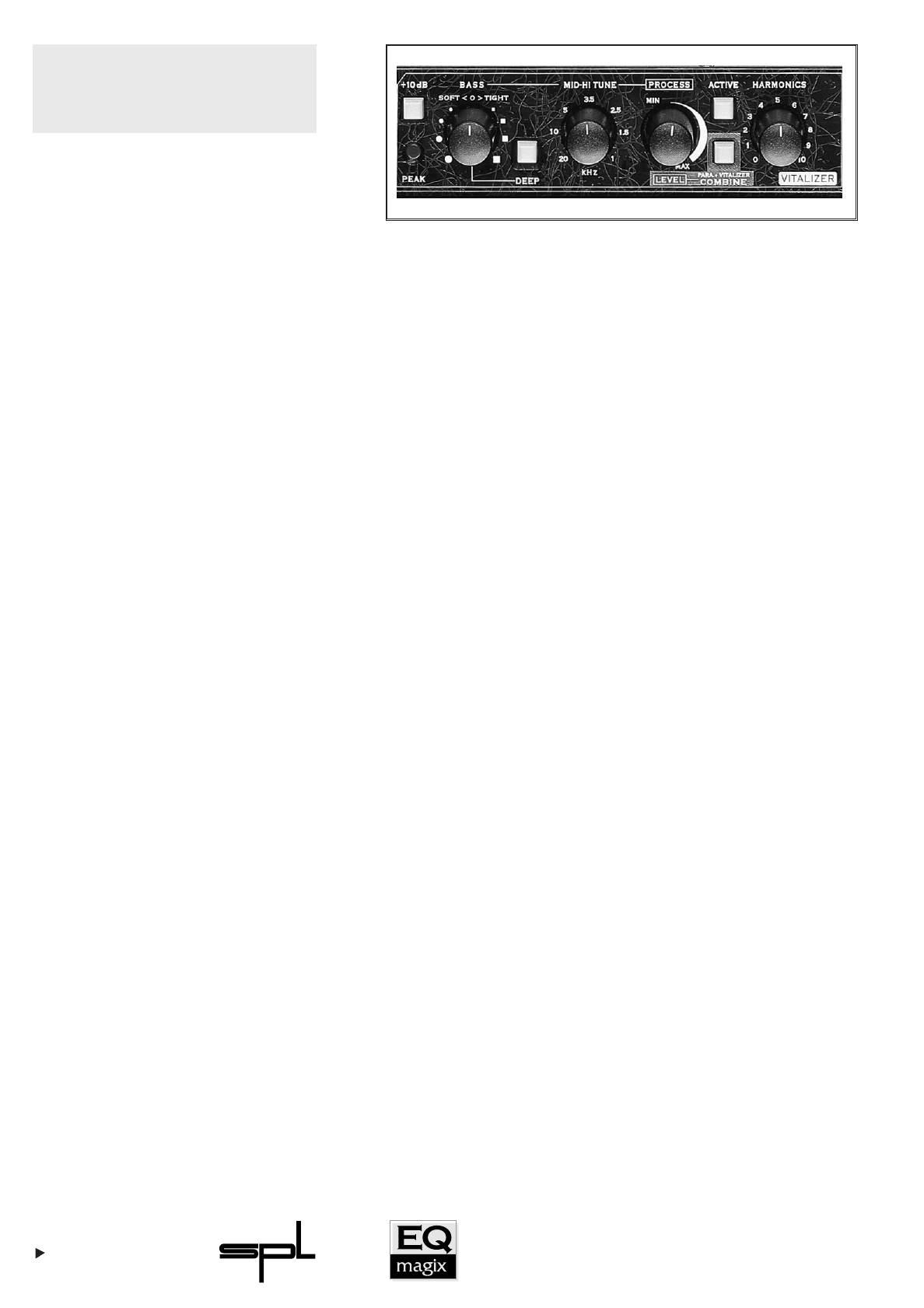
20
The initial settings on the V
ITALIZER
Switching on the V
ITALIZER
section
1.The P
ROCESS
control
2. The B
ASS
control
3. The M
ID
-H
I
T
UNE
control
Introduction into
the VITALIZER
®
If you are working with a VITALIZER filter network for the very first time, it
is advisable to operate the control parameters in a certain order to achieve
optimum results as quickly as possible. You should use a mono signal of
good quality as a signal source. You can either preamplify it in the I
NPUT
section or feed it directly into the INSERT RETURN, so that the signal goes
directly into the P
ARAMETRIC section.
The picture above shows the initial settings on the EQ MAGIX. First, turn
the B
ASS control to the centre position (»0«); the HARMONICS and the
P
ROCESS control on zero as well (extreme left) and turn the MID-HI TUNE
control to 3.5 kHz. The -10 dB, DEEP and COMBINE functions are left on
Bypass for the time being.
Press the A
CTIVE switch. There is no audible change in the sound at this
stage.
Slowly move the P
ROCESS control in from the extreme left. You will find
that there is no audible change in the sound until the
MIN position (ca. 11
o'clock). That is just how it should be. All frequencies from 3.5 kHz (initial
setting M
ID-HI TUNE) are only raised with increasing intensity above this
point. First set the P
ROCESS control at 3 o'clock. The bass range is not yet
influenced at this point.
The next step is to shift the B
ASS control from the zero position to both
sides. Watch out for the differing bass sounds nuances, the creation of
which is only controlled in that way by the V
ITALIZER.
Turn to the right: The bass sounds tight and dry.
Turn to the left: The bass sounds soft and round.
You should perform these hearing tests on appropriate »full-range«
monitors because near-field monitors normally cannot reproduce the deep
bass generated by the V
ITALIZER in its entirety. Decide on a bass sound of the
desired amplitude.
Now start varying M
ID-HI TUNE. The original setting is 3.5 kHz. Turn to
the right: The programme material sounds brighter and gets more mids
from about 1.5 kHz. The impression you hear is the reverse of the poten-


















